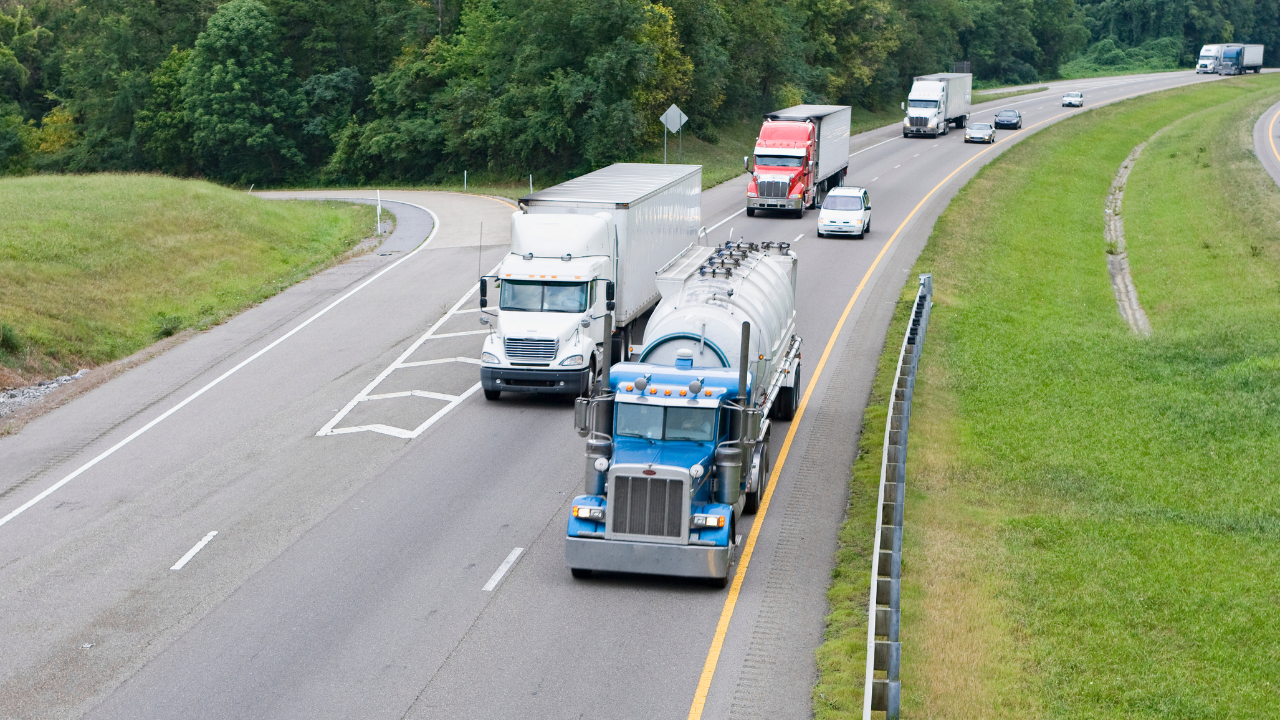
How To Improve Fleet Risk Management: Proven Tips to Reduce Expenses
Managing a fleet of trucks involves more than just ensuring deliveries are on time.
One of the key challenges faced by fleet owners is keeping operational costs low while minimizing risks.
From truck insurance premiums to maintenance expenses, improving fleet risk managementThe process of identifying, assessing, and controlling threats to an organization's capital and earn... is essential to running a cost-effective business.
Fool Proof Tips to Reduce Expenses
1. Prioritize Driver TrainingPrograms designed to educate and improve the skills of drivers, focusing on safe driving techniques,... and Safety
Investing in regular driver training is one of the most effective ways to improve fleet risk management. Well-trained drivers are less likely to be involved in accidents, which can lower your truck insurance premiums.
Focus on defensive driving techniques and educate drivers on safety protocols specific to your fleet.
Providing safety training also reduces wear and tearExclusion common in property and auto insurance policies that denies coverage for damage that result... on vehicles, resulting in fewer repairs.
Not only does this help keep your drivers and trucks safe, but it also reduces the likelihood of claims, which can increase your commercial truck insurance costs.
2. Implement TelematicsTechnology used to monitor vehicle movement, speed, and driver behavior, increasingly used by insure... and GPS Systems
Using telematics and GPS systems can improve your fleet’s efficiency and safety.
These systems allow you to monitor driver behavior, vehicle locations, and fuel consumption in real time. With this data, you can quickly address risky driving habits, such as speeding or hard braking, which can reduce accident rates.
In addition to improving safety, telematics can help you optimize routes to save on fuel costs. Many commercial trucking insurance providers offer discountsReductions in insurance premiums offered by insurers to policyholders who meet certain criteria that... to companies that use these technologies, as they are seen as reducing risk.
3. Regularly Maintain Your Vehicles
A well-maintained fleet is less likely to experience breakdowns or accidents. Ensure that all vehicles are regularly inspected, and repairs are made promptly.
A solid maintenance routine keeps your trucks in top shape, reducing downtime and costly emergency repairs.
Keeping detailed records of vehicle maintenanceRegular and necessary upkeep required to ensure the safe and efficient operation of a truck, typical... can also help lower your commercial insurance premiums.
Insurance companies often view a well-maintained fleet as a lower risk, which could save you money on your trucking insurance policyA contract between an insurance company and the policyholder, which outlines the terms under which t....
4. Hire Experienced Drivers
Hiring experienced drivers can significantly reduce your fleet’s risk profile. Drivers with clean records and experience handling large vehicles are less likely to cause accidents.
This can lead to fewer claims and lower commercial truck insurance costs.
Additionally, experienced drivers understand the importance of vehicle maintenance and are more likely to follow safety protocols. Partnering with an insurance brokerA professional who arranges and negotiates insurance on behalf of clients, potentially useful for tr... in California can help you find policies that reward businesses with experienced and reliable drivers.
5. Set Clear Safety Policies
Establishing and enforcing clear safety policies is another way to improve fleet risk management. Create guidelines for everything from cell phone use while driving to proper procedures during hazardous weather.
Make sure that all drivers understand and follow these rules to reduce accidents and improve overall safety.
Clear policies not only improve day-to-day safety but can also help reduce claims. Fewer accidents mean fewer claims, which will help keep your trucking insurance premiums under control.
6. Monitor Driver Performance
Regularly reviewing driver performance is essential to improving fleet safetySafety measures and policies specifically designed to prevent accidents and ensure the safe operatio... and reducing risk. Using data from telematics or other tracking systems, you can monitor things like speeding, harsh braking, and fuel efficiency.
When you notice risky behavior, address it immediately through coaching, additional training, or any other means.
Monitoring driver performance not only keeps your fleet safer but can also reduce wear on your vehicles. By catching issues early, you avoid costly repairs and keep insurance claims down, leading to lower commercial insurance costs.
7. Work with a Knowledgeable Insurance Broker
Navigating the world of commercial trucking insurance can be challenging, but working with an experienced insurance broker in California can simplify the process.
Brokers understand the industry and can help you find a policy that covers your fleet’s specific risks while also saving you money. They can also guide you through the claims process if an accident occurs.
A broker can help you explore coverage options tailored to your needs, such as liabilityA financial obligation or debt owed by an individual or business to another entity, typically result... coverage, cargo insuranceInsurance that covers loss or damage to freight during transit, which is critical for motor carriers..., or physical damage protection.
By working with a California insurance agency, you can ensure that you’re getting the best possible coverage at an affordable rate.
8. Use Data to Make Informed Decisions
Data plays a crucial role in fleet risk management. Telematics, maintenance recordsDocumentation that must be maintained by carriers to prove that vehicles are regularly inspected, ma..., and incident reports provide valuable insights into your operations.
Use this data to identify patterns, such as frequent maintenance issues or repeated unsafe driving behaviors.
Making data-driven decisions helps you address problems before they become major expenses. In turn, this leads to fewer claims, better vehicle performance, and lower overall costs for commercial truck insurance.
9. Schedule Regular Safety Audits
Safety audits are an essential part of maintaining a well-managed fleet. Conduct regular checks to ensure all safety protocols are being followed and vehicles are in good condition.
Audits allow you to catch issues early and make necessary improvements to prevent accidents.
Regular audits can also positively impact your trucking insurance costs. When insurers see that you are proactive about fleet safety, they are more likely to offer favorable terms on your commercial insurance policy.
10. Optimize Routes to Reduce Costs
Optimizing routes not only saves time but also reduces risk. Shorter, more efficient routes mean less time on the road, which lowers the chances of accidents.
This also reduces fuel costs and wear on your vehicles.
By using GPS tracking and route-planning tools, you can ensure that your drivers are taking the safest, most cost-effective routes. Lower mileage and reduced accident risk can result in lower commercial trucking insurance premiums over time.
Start Cutting Fleet Costs with Smarter Risk Management
Improving fleet risk management is key to reducing both operational and insurance costs. By prioritizing driver safety, maintaining vehicles, and using data to guide decisions, you can create a safer, more efficient fleet.
Working with an insurance broker in California will also help ensure you’re getting the best commercial insurance coverage for your needs.
At SoCal Truck Insurance, we can help you manage risks proactively, leading to fewer claims and lower premiums. This allows your fleet to operate more cost-effectively. Reach out to us now at 888-531-2855.


